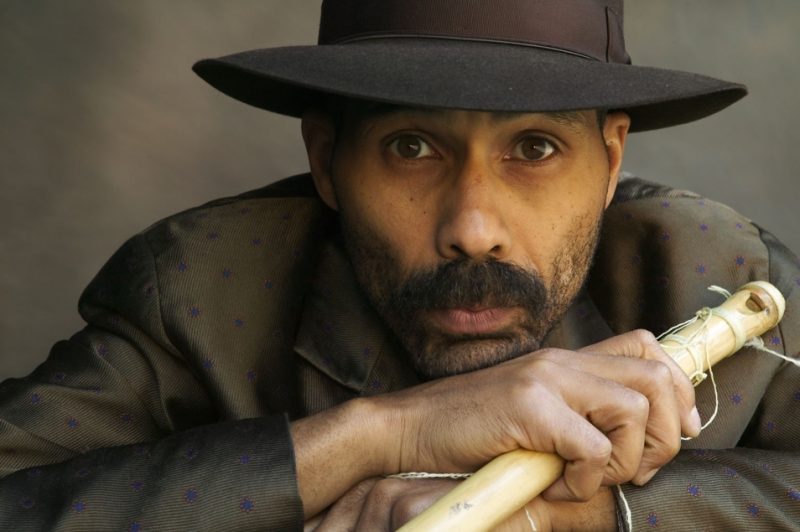New Music Corner 5
“America the Beautiful” by Kahil El’Zabar
Genre: Jazz
Kahil El’Zabar has been described in the music industry as a Renaissance man, jazz-fusion innovator and cultural guru, blending his areas of expertise to create his second project of 2020, “America the Beautiful.” Complex historical commentary is mixed with spirited optimism about the country’s future for an instrumental culmination of everything that personifies America in El’Zabar’s eyes.
His career as a percussionist began in the late 1970s, drawing inspiration from the greats such as Max Roach and Art Blakey, before establishing his own ensemble based on the simple sound of the traditional, pulsing African drum. To El’Zabar, this sound is central to America’s musical identity and is often overlooked as its foundation. Despite his eclectic creativity, the bulk of El’Zabar’s work is revivalist, adapting classic melodies and interpreting them through a modern lens.
The title track of his newest project is a tune nearly every American knows, yet it is revitalized through energetic trumpet refrains and dissonant explorations. Along with “America the Beautiful,” El’Zabar covers Charles Wright and the Watts 103rd Street Rhythm Band’s “Express Yourself” and Mongo Santamaria’s “Afro Blue,” the first jazz hit written in the traditional African 3:2 cross rhythm. Although both tracks lack identifiable patriotism, they are considered national standards for their cultural significance and incomparable musical influence. El’Zabar performs these classics in a contemporary style to honor the originators of American music and reinspire a new generation of Black musicians by connecting them to the autochthonous rhythms of their predecessors. El’Zabar also includes original pieces such as “Freedom March,” an ode to jazz’s forefathers while also an opportunity for him and his group to let loose on a track filled with improvisation and randomness. “America the Beautiful” returns to tradition, optimism and cultural understanding and is representative of El’Zabar’s message for the American people: using music as an instrument for hope and change.
https://open.spotify.com/album/4EgTR3I2elWBnbymiTZlcQ?si=Y_lWekS2SU2En7oD6c1KlQ
“Extinction Level Event 2: The Wrath of God” by Busta Rhymes
Genre: Hip-Hop
Few people in modern music history possess the charismatic, bellicose energy of Busta Rhymes. The Brooklyn MC got his start as a member of the boom-bap group Leaders of the New School, before releasing a series of gold and platinum hits, frequently collaborating with A Tribe Called Quest and Pharrell Williams and becoming recognized as arguably hip-hop’s greatest live performer. His style is unique and aggressive in all aspects, from flow to content to breakneck pace. Now, after a 10-year hiatus, Busta’s larger-than-life persona returns with the same terrorizing energy that makes each song feel like a straight shot of serotonin bordering on an overdose. Understandably, experimenting with a variety of new sounds at Busta’s 110% energy results in “The Wrath of God” being an absolutely glorious mess. A Hall of Fame lineup of producers including DJ Premier, Pete Rock, Swizz Beats and the late J Dilla would typically result in four sonically different albums, yet Busta acts like a Swiss Army knife, switching his flows and hooks like no other MC could. The album’s highest charting track, “Look Over Your Shoulder,” features a Kendrick Lamar verse from 2014 and samples the Jackson 5’s “I’ll Be There,” marking a new stylistic milestone for Busta. Overall, “The Wrath of God” mixes the old with the new, braggadocious swagger with political commentary and raw club mixes with introspective rhymes. “Boomp!” and “Master Fard Muhammad” with Rick Ross show a more relaxed but tenacious approach, while “Outta My Mind” and “Czar” are classic 2000s bangers. Regardless of the album’s lack of coherence, its extensive list of collaborators signify a unifying moment for hip-hop. Along with a group of legendary producers, features include Rakim, Q-Tip, Anderson .Paak, Ol’ Dirty Bastard and BET’s Hip-Hop Lyricist of the Year Rapsody. Celebrating the release of “The Wrath of God,” Busta even took to the streets for a surprise socially-distanced concert on Harlem’s 125th Street. Despite the drastically different circumstances, he still finds a way to move a crowd, spreading the same positivity and emphatic energy that’s characterized him for years.
https://open.spotify.com/album/7IO9UObUD76ZCLVu3ND7tz?si=EZvR4xx5S3uQVEdIMOHvag
What I’m Listening To:
“Corinne Bailey Rae” (2006) by Corinne Bailey Rae
Genre: Pop-Soul, Singer/Songwriter
At the turn of the 21st century, as female vocalists began transitioning away from the neo-soul movement, a new era of stylistic revivalism began, infusing the current genre with timeless jazz standards. Amy Winehouse and Macy Gray upended Erykah Badu and Lauryn Hill as the new pioneers of contemporary R&B, with Winehouse specifically globalizing this sound as the U.K.’s biggest musician since The Beatles. Her roots were in the romantic jazz ballads of the ’50s and ’60s, but an admiration for American hip-hop and spirited soul led to the birth of one of the most influential vocalists in history. However, her fame led to drug and alcohol abuse, creating a lot of negative press, and drama circulated Winehouse until her heartbreaking death. At the time, Corinne Bailey Rae became her antithesis, following in her countrywoman’s footsteps to a chart-topping self-titled debut and three Grammy nominations. Her soft voice is mesmerizing, and her inflections are remarkably smooth, creating a melodic album that exudes innocence and warmth. While Winehouse’s music was filled with turmoil and despair, Bailey Rae provides an endearingly cute alternative while maintaining a similar musical texture. Bailey Rae was a product of her environment, heavily influenced by her family structure and church experiences. Growing up the daughter of her Baptist Caribbean father and Evangelical English mother, her childhood playlist ranged from calypso to jazz to classic rock. She began singing first at her mother’s Brethren church, mastering her technical ability, before being introduced to her father’s Baptist choir, where her previous style was introduced to more freedom and expression. This background molds her debut as she blends her personal life with sophistication, soulfulness and comfort. The lead singles “Like A Star’” and “Put Your Records On” are perfect summer ballads, while “I’d Like To” and “Trouble Sleeping” are some of the best vocal performances of the century. On her award-winning debut, Corinne Bailey Rae, without a booming voice or complex songwriting, has the uncanny ability to excite by creating a peaceful, consistent mood that carries this pop-soul classic.











































































































































































































